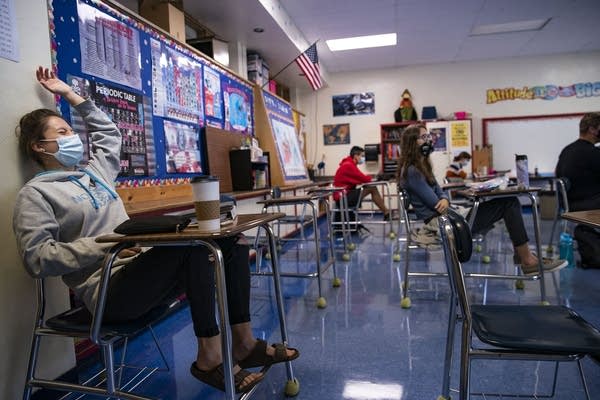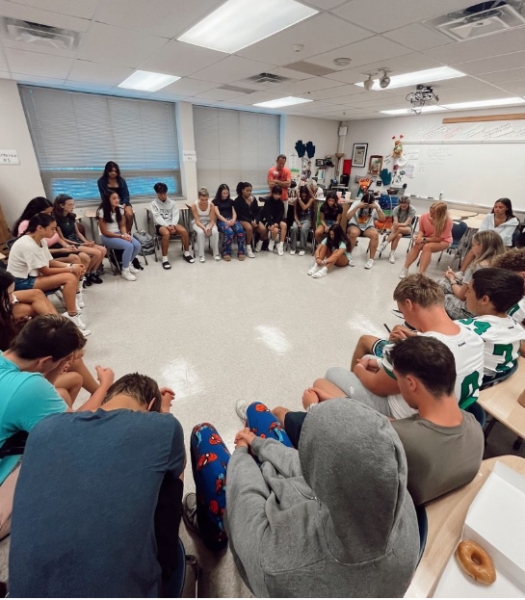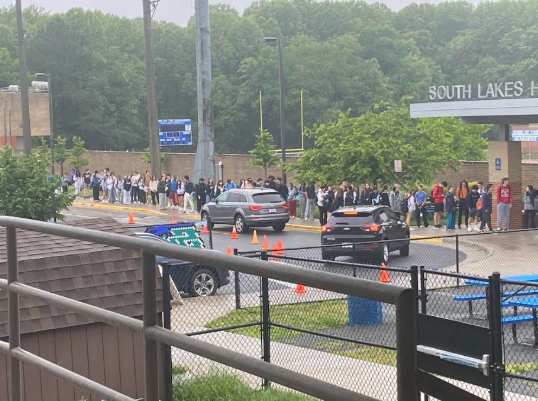Things to consider before returning to school

Image via MPR News
With schools attempting to open as safely and quickly as possible, students are left to wonder if going back to in-school learning is something they actually want to do. Schools play a critical role in a students’ educational attainment, and a big part of that is found in physical interaction with classmates and teachers. Still, there are a few things to consider before sealing your decision to stay virtual or return to school.
It’s a given, but school is most definitely going to look a lot different from what students remember. A lot of precautions have been taken to limit crowding and ensure safety like modifying classroom layouts and reinforcing frequent hygiene among staff and students. While all of this is necessary, it’s still bound to put strain on social-emotional learning.
Without the ability to socialize as effectively as before, it’s hard to say if students may or may not fall short of critical life experiences, helpful opportunities, or significant relationships. This could be used as a way to defend in-person learning and as a means to counter against virtual learning, it’s hard to know if the learning experience will change. The lack of peer interaction in virtual learning has already taken a big toll on the mental health of students and it’s unclear if in-person learning will be the same just without faces on screens.
In the past, kids would be sent to school with runny noses and coughs all the time, and while the risk is much higher now, schools can’t expect everyone to be considerate. With a frightening amount of people advocating against wearing masks and failing to communicate clearly with staff and other families, it’s vital to contemplate the risks of returning.

It’s important to consider all of the ways to prevent getting sick, assuming you cannot rely on those around you to be considerate of your health at all times. Everyone knows they must consistently and correctly use their masks at all times, maintain hand hygiene and respiratory etiquette, socially distance as far as possible and to continually practice disinfection and cleaning. Knowing is only one step though, students and staff are required to keep this up without fail. It’s a little bit of extra effort that wasn’t properly maintained before the virus outbreak, so there’s no telling how it may be now, despite the higher probability of danger.
A lot of students will likely prefer the change from a computer screen to a classroom, but it’s not certain that it won’t come without stress. While it’s relief to finally see the faces of friends, there’s still an underlying worry regarding the virus. Children and adults who are infected can end up being asymptomatic, which means they have COVID-19, but they have no symptoms and can still spread the virus. That thought is incredibly concerning. Stress forms when people are in places they can’t entirely refer to as “safe,” and the threat of a life-threatening sickness is no different.
That’s not to say students shouldn’t return at all, but some things just can’t be ignored. Still, when students and staff are confident in their school’s safety plan, there will be a boost in social and emotional learning. Teachers will be able to see their student’s faces and recognize their feelings instead of waiting in silence for a response. Students will get to break free of this bland cycle of waking up, logging on, staring at the screen for hours, then rinse and repeat. Texting friends gets old after a while, and it’s refreshing to hear voices without static or random cuts. The restrictions now in place during in-person school may be hard to deal with at first, but it’s up to the person what they’re willing or not willing to do.
Caiya Morrison is currently a senior at South Lakes High School. She is a staff writer for the Sentinel. She spends most of her time writing creatively...

















